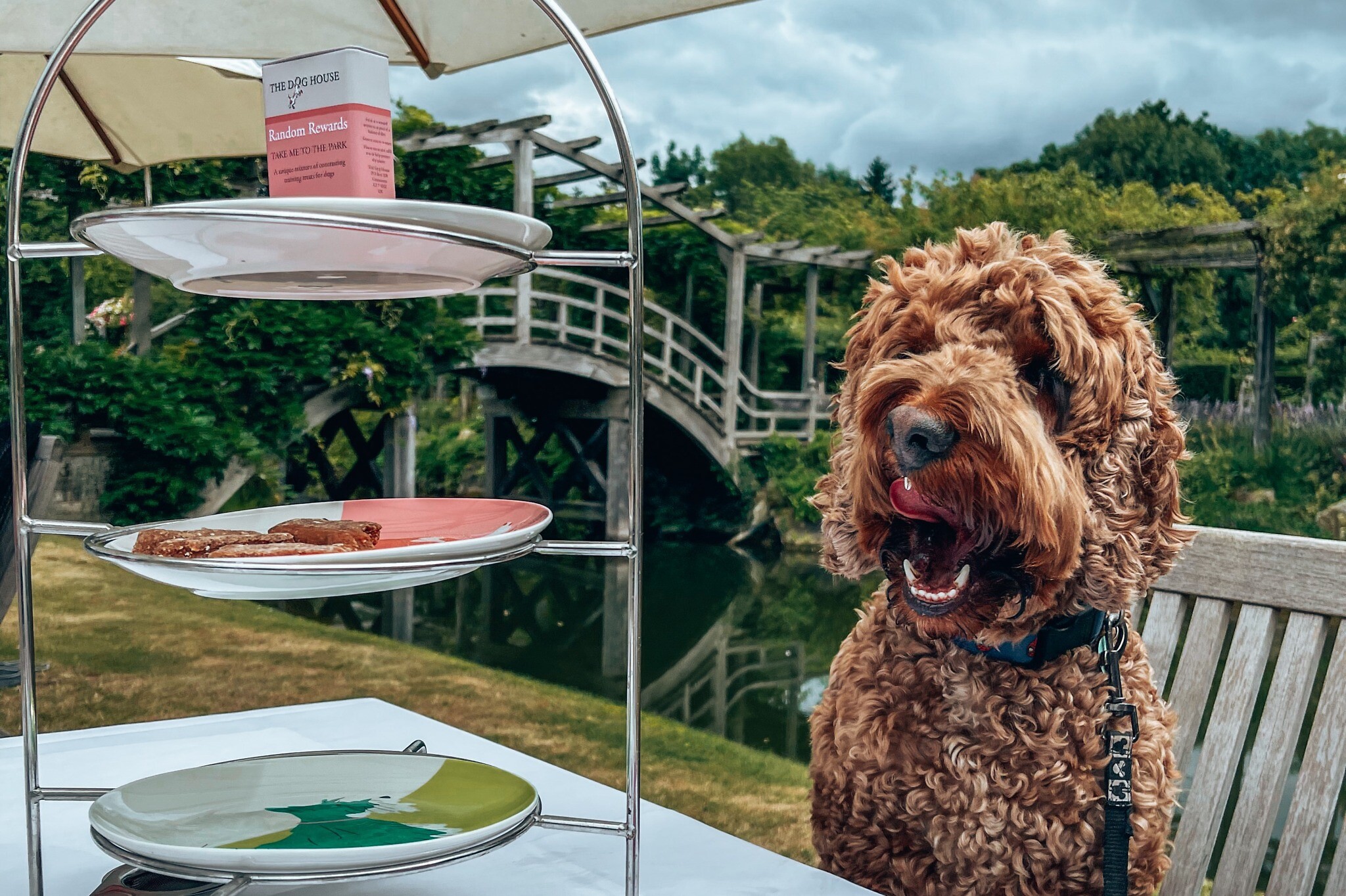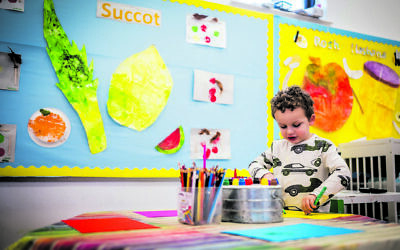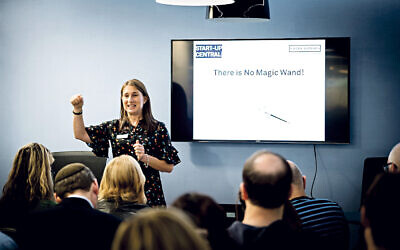How to do scones… and other life lessons
As the UK celebrates Afternoon Tea Week, we look at the origins of this enduring tradition
Milk first or tea first? Jam first or cream first? Earl Grey or English breakfast? The quintessentially English tradition of afternoon tea poses many questions, but the one I most want the answer to is this: what’s the michigas about bridge rolls?
I asked social historian Gillian Perry MBE, author of the Pass the Scones, A Social History of Afternoon Tea, and she was baffled. She duly went off to ask Debbie née Grodzinski, who told her that the bridge roll, which was first seen in 1926 and was popular for children’s tea parties, is mezanot, meaning that it is defined as cake rather than bread, and therefore in Orthodox circles does not require the washing of hands prior to consumption. The reason we all love bridge rolls is that they are sweeter than sandwiches, and that is because the dough is made with fruit juice rather than water, which is what renders it cake.

Gillian founded and for 26 years ran The Anne Frank Trust UK, an educational charity. When she retired in 2016 she still wanted to be involved in education so she embarked on a new career as a speaker and lecturer. She approached a cruise company with the offer to give on-board lectures about Anne Frank and they asked whether she had any additional subjects to talk on so that there would be a varied programme for the passengers. She thought about what she was interested in and decided to research the history and customs of afternoon tea. “Not only is it a tradition that has survived for hundreds of years, it is also enjoying a huge revival, much of which can be credited to the Bake Off series” she says. “Afternoon tea has a great sense of nostalgia attached to it, and it’s something special and uplifting – not something that you have every day.”
Get The Jewish News Daily Edition by email and never miss our top stories Free Sign Up

Gillian’s quest took her to many of Britain’s beautiful historic houses and hotels and she enjoyed afternoon tea in the finest, quirkiest and most interesting of locations. Armed with her newfound knowledge, Gillian has lectured at sea, on land and in venues as wide ranging as JW3, the IOD and private homes. During lockdown she decided to write a book, which is not only an enlightening read, but also a great gift.
Tea was first discovered in China 5,000 years ago when a few leaves from a bush fell into Emperor Shen Nungs’ boiled water. He loved the taste and is credited with pioneering the drinking of tea as we know it today. By the 1600s it had made its way to the UK, and in 1662, when the new Queen Catherine arrived from Portugal, she brought trunks of tea as part of her dowry and it soon became the official court beverage.

The tradition of afternoon tea as a meal came about in the 1840s, when the Duchess of Bedford found that she was getting hungry at home in Woburn Abbey in the long hours that stretched between her midday lunch and the evening meal, which was served fashionably late around 8.30 pm. She asked her maid to bring her some light refreshments at 4pm: “Perhaps a few triangles of bread, butter and jam, and a couple of small biscuits”. As part of her research for her book, Gillian was as invited to Woburn Abbey. “Imagine my excitement at being in the very room where the Duchess’ first experience of afternoon tea was taken,” she says.
The Duchess began to invite her friends to join her for this repast, and so the practice made its way into the drawing rooms of the aristocracy and then to Queen Victoria. She introduced the ritual at court and soon all of society was drinking tea and eating sandwiches and cakes in the afternoon. “Cakes tended to be solid and heavy at that time. The invention of baking powder allowed them to rise and be airy and Queen Victoria’s love a of certain simple light airy sponge cake spread with jam led to it being named after her,” says Gillian.

She goes on to explain the difference between afternoon tea and high tea. “High tea describes a more substantial meal that workers came home to, having foregone a sustaining meal at lunchtime. It was served at the later ie ‘high’ point of the afternoon. It also applied to an evening meal in public venues where they sat at high stools at a counter rather than being waited on at tables as the more affluent were. Today Afternoon Tea is often referred to as High Tea in other parts of the world, especially the US.”
Milk was not commonly drunk with tea in Britain until the 1720s, when black tea overtook green tea in popularity. “In the early days, poorer quality cups could crack when hot tea was poured in so putting milk in first prevented this. Putting it in last was a way of showing that you had the best quality china,” says Gillian.
 In the 1860s, tea rooms started to spring up in the UK. “This was an exciting development for ladies, as they could meet their friends in a public setting without being escorted by their husbands and without risking damage to their reputation,” says Gillian. The Aerated Bread Company opened its first ABC tea shop in 1864 and by 1923 had 250 branches. There were considered a little downmarket and J Lyons opened up a more genteel alternative, which was also better run. The staff were known as nippies, which implied speed and efficiency. “At one talk a gave a lady proudly told me that her mother had been a Lyons nippy”, says Gillian.
In the 1860s, tea rooms started to spring up in the UK. “This was an exciting development for ladies, as they could meet their friends in a public setting without being escorted by their husbands and without risking damage to their reputation,” says Gillian. The Aerated Bread Company opened its first ABC tea shop in 1864 and by 1923 had 250 branches. There were considered a little downmarket and J Lyons opened up a more genteel alternative, which was also better run. The staff were known as nippies, which implied speed and efficiency. “At one talk a gave a lady proudly told me that her mother had been a Lyons nippy”, says Gillian.
 Whether you pronounce scone to rhyme with gone, stone or even scoon (largely dependent on where you live), the pressing debate is about the cream/jam order. Devon claims cream first, Cornwall jam first. “I find that people generally stick with the Cornwall method, as aesthetically the red jam breaks up the beige of the scone and the white of the cream,” says Gillian, who tells me that she prefers a prefer a sharp jam like blackcurrant and a small scone without raisins.
Whether you pronounce scone to rhyme with gone, stone or even scoon (largely dependent on where you live), the pressing debate is about the cream/jam order. Devon claims cream first, Cornwall jam first. “I find that people generally stick with the Cornwall method, as aesthetically the red jam breaks up the beige of the scone and the white of the cream,” says Gillian, who tells me that she prefers a prefer a sharp jam like blackcurrant and a small scone without raisins.
In the ‘anything goes’ 21st century, afternoon tea comes in many guises. As well as the traditional afternoon tea found in hotels, teashops and cafes there as also themed teas, savoury teas, vegan teas, doggy-friendly teas and Indian, Chinese and Japanese restaurants have also developed their spin on afternoon tea. One the most innovative I have come across is a Tipsy Tea that my daughter took me to on Mother’s Day where the teapot is filled with a cocktail rather than a brew. Afternoon tea is increasingly popular for celebrations at home and caterers have come up with ever more creative ways of doing this. Karen Harris Catering sets up a grazing table beautifully decorated with flowers and plants, with dishes and plates of tea-time nibbles all at different heights. Gillian is often booked to speak at celebration teas.

Smoked salmon is a key feature of afternoon tea. It was introduced to the UK by eastern European Jewish immigrants fleeing the pogroms. Salmon was plentiful n their rivers and they smoked it as a way of preserving it. Once settled in the UK they started importing Baltic salmon until Aaron ‘Harry’ Forman started curing Scottish salmon. It was he who convinced culinary establishments that it was a delicacy and that’s how it found its way on to the three-tiered tea stand. This brings me to my next question: why a tiered stand? “I have no idea, says Gillian. “Perhaps the low tables were too small to carry the increasing number of delicacies that ladies wanted to consume with their ‘low’ ie ‘afternoon’ tea. I will have to do some research.”
I shall enjoy her findings with a cuppa.
Please Pass the Scones, A Social History of English Afternoon Tea by Gillian Perry is published by Carnegie Publishing £14.99

Thank you for helping to make Jewish News the leading source of news and opinion for the UK Jewish community. Today we're asking for your invaluable help to continue putting our community first in everything we do.
For as little as £5 a month you can help sustain the vital work we do in celebrating and standing up for Jewish life in Britain.
Jewish News holds our community together and keeps us connected. Like a synagogue, it’s where people turn to feel part of something bigger. It also proudly shows the rest of Britain the vibrancy and rich culture of modern Jewish life.
You can make a quick and easy one-off or monthly contribution of £5, £10, £20 or any other sum you’re comfortable with.
100% of your donation will help us continue celebrating our community, in all its dynamic diversity...
Engaging
Being a community platform means so much more than producing a newspaper and website. One of our proudest roles is media partnering with our invaluable charities to amplify the outstanding work they do to help us all.
Celebrating
There’s no shortage of oys in the world but Jewish News takes every opportunity to celebrate the joys too, through projects like Night of Heroes, 40 Under 40 and other compelling countdowns that make the community kvell with pride.
Pioneering
In the first collaboration between media outlets from different faiths, Jewish News worked with British Muslim TV and Church Times to produce a list of young activists leading the way on interfaith understanding.
Campaigning
Royal Mail issued a stamp honouring Holocaust hero Sir Nicholas Winton after a Jewish News campaign attracted more than 100,000 backers. Jewish Newsalso produces special editions of the paper highlighting pressing issues including mental health and Holocaust remembrance.
Easy access
In an age when news is readily accessible, Jewish News provides high-quality content free online and offline, removing any financial barriers to connecting people.
Voice of our community to wider society
The Jewish News team regularly appears on TV, radio and on the pages of the national press to comment on stories about the Jewish community. Easy access to the paper on the streets of London also means Jewish News provides an invaluable window into the community for the country at large.
We hope you agree all this is worth preserving.
-
By Brigit Grant
-
By Laurent Vaughan - Senior Associate (Bishop & Sewell Solicitors)
-
By Laurent Vaughan - Senior Associate (Bishop & Sewell Solicitors)
-
By Laurent Vaughan - Senior Associate (Bishop & Sewell Solicitors)
-
By Laurent Vaughan - Senior Associate (Bishop & Sewell Solicitors)






















